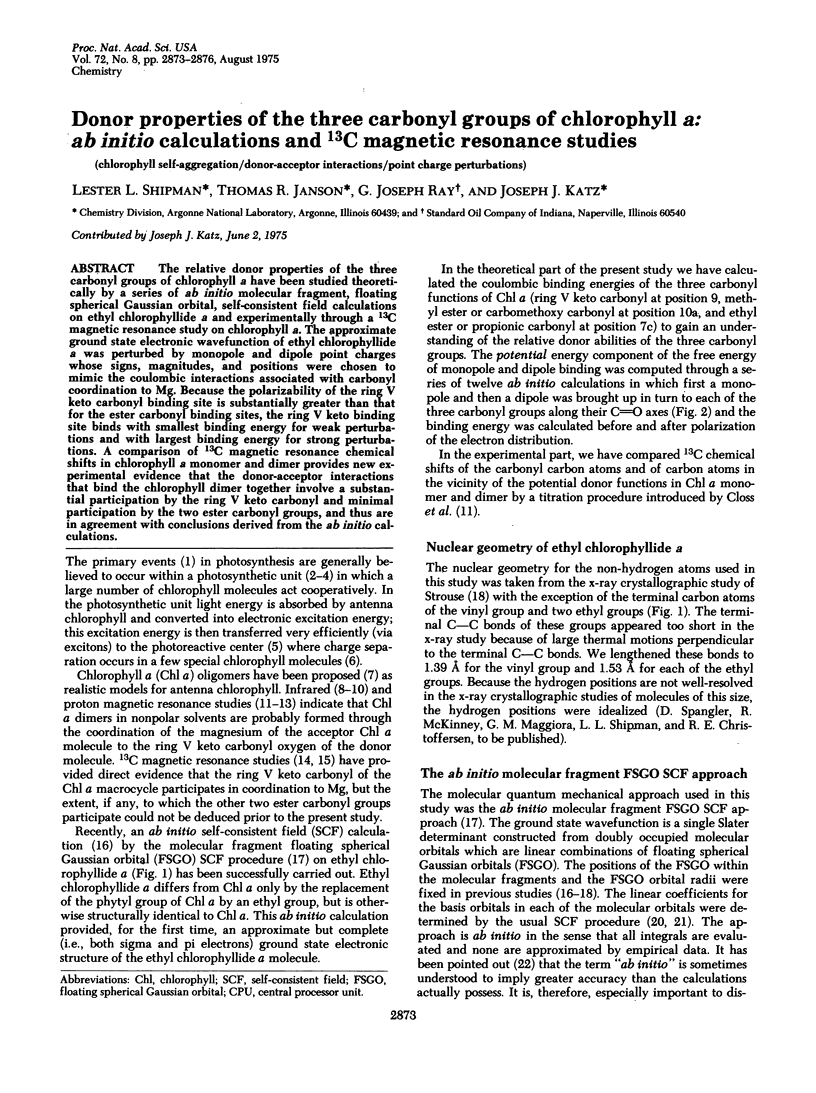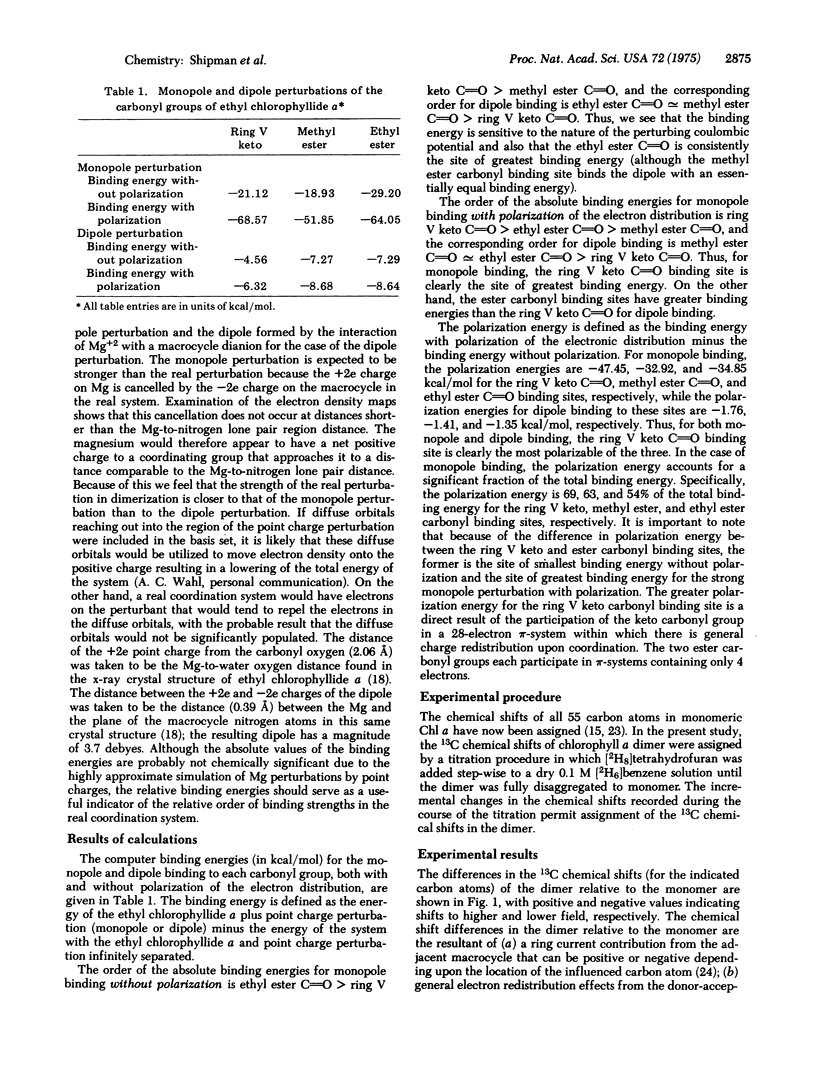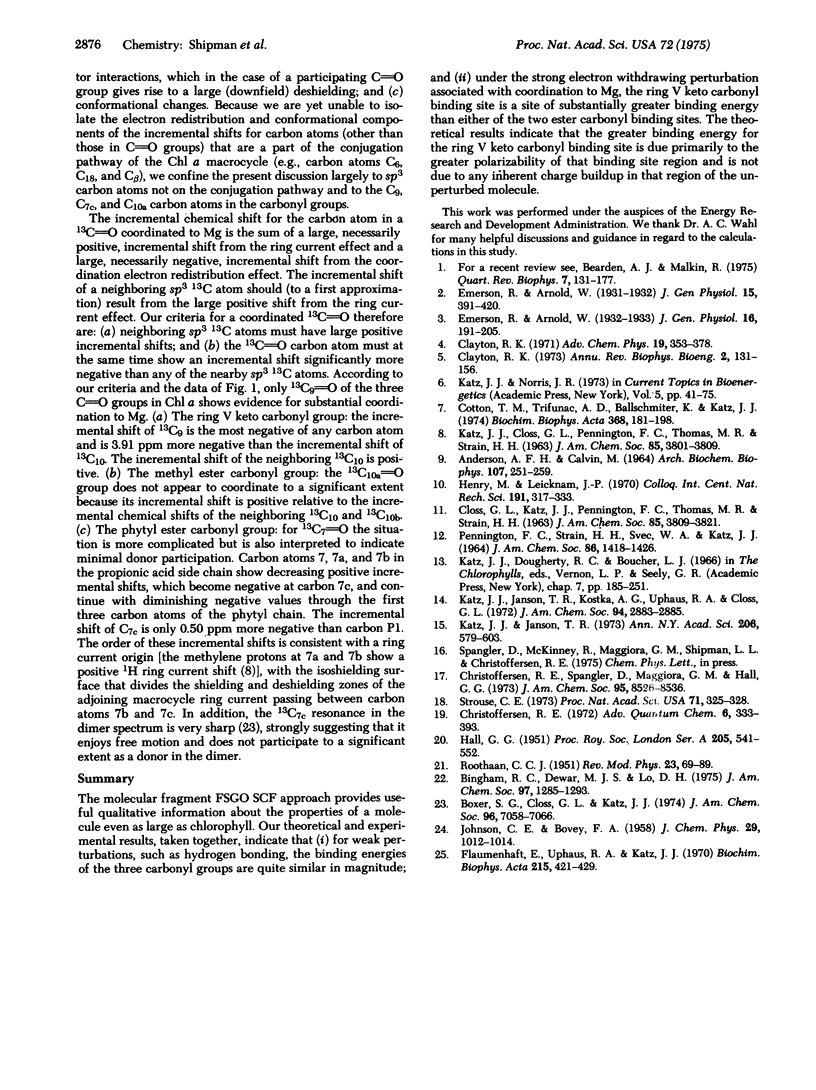Abstract
The relative donor properties of the three carbonyl groups of chlorophyll a have been studied theoretically by a series of ab initio molecular fragment, floating spherical Gaussian orbital, self-consistent field calculations on ethyl chlorophyllide a and experimentally through a 13C magnetic resonance study on chlorophyll a. The approximate ground state electronic wavefunction of ethyl chlorophyllide a was perturbed by monopole and dipole point charges whose signs, magnitudes, and positions were chosen to mimic the coulombic interactions associated with carbonyl coordination to Mg. Because the polarizability of the ring V keto carbonyl binding site is substantially greater than that for the ester carbonyl binding sites, the ring V keto binding site binds with smallest binding energy for weak perturbations and with largest binding energy for strong perturbations. A comparison of 13C magnetic resonance chemical shifts in chlorophyll a monomer and dimer provides new experimental evidence that the donor-acceptor interactions that bind the chlorophyll dimer together involve a substantial participation by the ring V keto carbonyl and minimal participation by the two ester carbonyl groups, and thus are in agreement with conclusions derived from the ab initio calculations.
Full text
PDF



Selected References
These references are in PubMed. This may not be the complete list of references from this article.
- ANDERSON A. F., CALVIN M. THE AGGREGATION OF CHLOROPHYLL A. Arch Biochem Biophys. 1964 Aug;107:251–259. doi: 10.1016/0003-9861(64)90327-3. [DOI] [PubMed] [Google Scholar]
- Bearden A. J., Malkin R. Primary photochemical reactions in chloroplast photosynthesis. Q Rev Biophys. 1974 May;7(2):131–177. doi: 10.1017/s0033583500001396. [DOI] [PubMed] [Google Scholar]
- Clayton R. K. Primary processes in bacterial photosynthesis. Annu Rev Biophys Bioeng. 1973;2:131–156. doi: 10.1146/annurev.bb.02.060173.001023. [DOI] [PubMed] [Google Scholar]
- Cotton T. M., Trifunac A. D., Ballschmiter K., Katz J. J. State of chlorophyll a in vitro and in vivo from electronic transition spectra, and the nature of antenna chlorophyll. Biochim Biophys Acta. 1974 Nov 19;368(2):181–198. doi: 10.1016/0005-2728(74)90148-0. [DOI] [PubMed] [Google Scholar]
- Flaumenhaft E., Uphaus R. A., Katz J. J. Isotope biology of 13C. Extensive incorporation of highly enriched 13C in the alga Chlorella vulgaris. Biochim Biophys Acta. 1970 Sep 22;215(3):421–429. doi: 10.1016/0304-4165(70)90092-9. [DOI] [PubMed] [Google Scholar]
- Katz J. J., Janson T. R. Chlorophyll-chlorophyll interactions from 1H and 13C nuclear magnetic resonance spectroscopy. Ann N Y Acad Sci. 1973;206:579–603. doi: 10.1111/j.1749-6632.1973.tb43238.x. [DOI] [PubMed] [Google Scholar]
- Strouse C. E. The Crystal and Molecular Structure of Ethyl Chlorophyllide a.2H(2)O and Its Relationship to the Structure and Aggregation of Chlorophyll a. Proc Natl Acad Sci U S A. 1974 Feb;71(2):325–328. doi: 10.1073/pnas.71.2.325. [DOI] [PMC free article] [PubMed] [Google Scholar]


